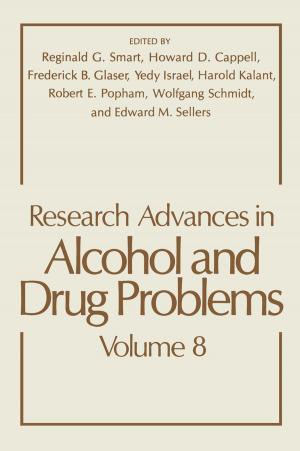Chemistry and Technology of Lubricants
Kids, Natural World, Nonfiction, Reference & Language, Education & Teaching, Science & Nature, Science| Author: | R. M. Mortier, S. T. Orszulik | ISBN: | 9781461532729 |
| Publisher: | Springer US | Publication: | December 6, 2012 |
| Imprint: | Springer | Language: | English |
| Author: | R. M. Mortier, S. T. Orszulik |
| ISBN: | 9781461532729 |
| Publisher: | Springer US |
| Publication: | December 6, 2012 |
| Imprint: | Springer |
| Language: | English |
The use oflubricants began in ancient times and has developed into a major international business through the need to lubricate machines of increasing complexity. The impetus for lubricant development has arisen from need, so lubricatingpractice has preceded an understanding ofthe scientific principles. This is not surprising as the scientific basis of the technology is, by nature, highly complex and interdisciplinary. However, we believe that the under standing of lubricant phenomena will continue to be developed at a mol ecular level to meet future challenges. These challenges will include the control of emissions from internal combustion engines, the reduction of friction and wear in machinery, and continuing improvements to lubricant performanceand life-time. More recently, there has been an increased understanding of the chemical aspects of lubrication, which has complemented the knowledge and under standing gained through studies dealing with physics and engineering. This book aims to bring together this chemical information and present it in a practical way. It is written by chemists who are authorities in the various specialisations within the lubricating industry, and is intended to be of interest to chemists who may already be working in the lubricating industry or in academia, and who are seeking a chemist's view of lubrication. It will also be of benefit to engineers and technologists familiar with the industry who require a more fundamental understanding oflubricants.
The use oflubricants began in ancient times and has developed into a major international business through the need to lubricate machines of increasing complexity. The impetus for lubricant development has arisen from need, so lubricatingpractice has preceded an understanding ofthe scientific principles. This is not surprising as the scientific basis of the technology is, by nature, highly complex and interdisciplinary. However, we believe that the under standing of lubricant phenomena will continue to be developed at a mol ecular level to meet future challenges. These challenges will include the control of emissions from internal combustion engines, the reduction of friction and wear in machinery, and continuing improvements to lubricant performanceand life-time. More recently, there has been an increased understanding of the chemical aspects of lubrication, which has complemented the knowledge and under standing gained through studies dealing with physics and engineering. This book aims to bring together this chemical information and present it in a practical way. It is written by chemists who are authorities in the various specialisations within the lubricating industry, and is intended to be of interest to chemists who may already be working in the lubricating industry or in academia, and who are seeking a chemist's view of lubrication. It will also be of benefit to engineers and technologists familiar with the industry who require a more fundamental understanding oflubricants.















